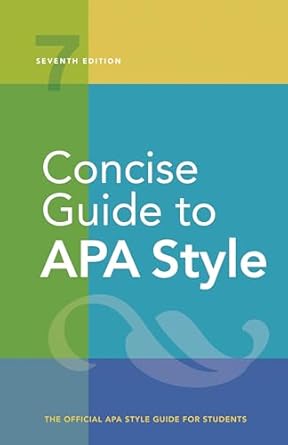[toc]
apa headings format guide examples for student papers
Concise Guide to APA Style: 7th Edition (OFFICIAL)
Page 48 Review
Understanding APA Style Headings: A Detailed Commentary
This excerpt from a student paper guide delves into the nuances of using headings in APA style, providing a structured approach to organizing academic content.
Let’s break down the key elements discussed.
Levels of Headings: A Hierarchical Structure
APA style utilizes a hierarchical system of headings, ranging from Level 1 to Level 5.
The excerpt emphasizes the importance of using these levels strategically to create a clear and logical flow within a paper. “Table 1.3 shows how to format each level of heading.” This table, crucial for understanding the structure, outlines the distinct formatting rules for each level.
The guidelines explain: “If only one level of heading is needed, use Level 1; if two levels are needed, use Levels 1 and 2; if three levels are needed, use Levels 1, 2, and 3; and so forth.” This demonstrates a flexible yet structured approach, allowing writers to adapt the heading system to the complexity of their work.
The excerpt also notes that “short student papers may not require any headings,” further highlighting the adaptability of the style.
Formatting Specifics: Boldness, Italics, and Placement
Each heading level has specific formatting requirements, as highlighted in “Table 1.3 Format for the Five Levels of Heading in APA Style.” These requirements include capitalization, boldness, italicization, and indentation.
For example, a Level 1 heading is “Centered, Bold, Title Case Heading,” while a Level 3 heading is “Flush Left, Bold Italic, Title Case Heading.” The level of detail provided ensures consistency across academic papers.
Level 4 and 5 headings are particularly interesting. “Indented, Bold, Title Case Heading, Ending With a Period.
Text begins on the same line and continues as a regular paragraph.” This demonstrates how APA style integrates headings seamlessly into the body of the text, creating a cohesive reading experience.
Similarly, Level 5 uses “Indented, Bold Italic, Title Case Heading, Ending With a Period.
Text begins on the same line and continues as a regular paragraph.”
Section Labels: Signposting Your Paper
Beyond headings, the excerpt addresses the use of section labels, such as “Abstract,” “References,” and “Appendix A.” “Place section labels on a separate line at the top of the page on which the section begins, in bold and centered.” These labels act as signposts, clearly marking the different sections of the paper and enhancing readability.
Practical Examples and Guidance
The excerpt refers to visual aids: “Figure 1.3 demonstrates the use of headings in the introduction, and Figure 1.4 lists all the headings used in a sample paper in correct format.” These figures, along with the “sample student paper at the end of this chapter,” offer concrete examples of how to implement APA style headings effectively.
This practical approach is invaluable for students learning the intricacies of academic writing.
Key Takeaways: Clarity and Consistency
The core message of this excerpt is the importance of clarity and consistency in academic writing.
By adhering to the specific formatting guidelines for headings and section labels, writers can create well-organized and easily navigable papers.
The hierarchical structure of headings allows for a logical presentation of information, while the consistent formatting ensures a professional and polished appearance.
The excerpt also highlights the importance of using only the necessary number of headings: “Use only the number of headings necessary to differentiate distinct sections in your paper.” This emphasizes the principle of parsimony, encouraging writers to use headings purposefully rather than excessively.
In conclusion, this excerpt provides a valuable guide to understanding and implementing APA style headings.
By following these guidelines, students can enhance the clarity, organization, and overall quality of their academic papers.
Understanding that “In title case, most words are capitalized (see Section 5.7),” is just one small but important detail.
Buy full ebook for only $18: https://www.lulu.com/shop/american-psychological-association/concise-guide-to-apa-style-7th-edition-official/ebook/product-rmzpq54.html?page=1&pageSize=4

